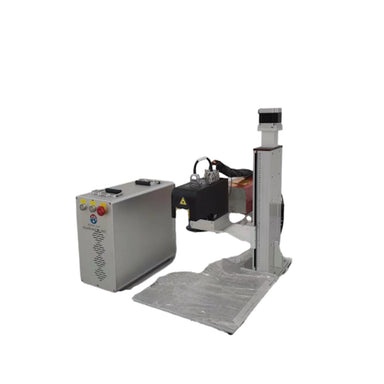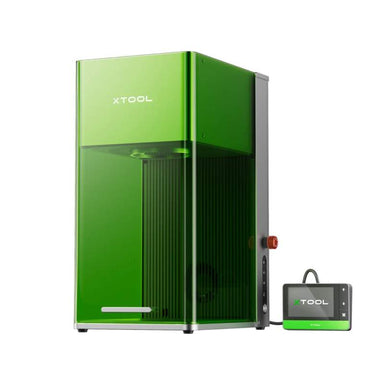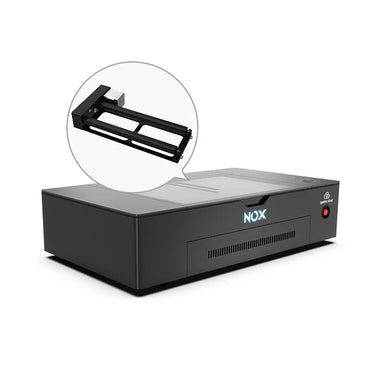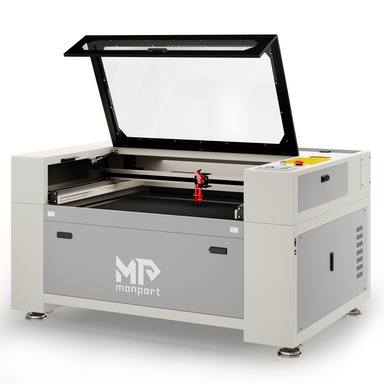 Sale
Sale
Redefine UV Engraving with the Omni X: Precision, Speed, and Safety in One Powerhouse. ComMarker Omni X Laser, this isn’t just another engraver—it...
View full detailsEngraving on glass isn’t just about marking a surface — it’s about creating crystal-clear designs that last a lifetime. Our collection of laser engravers for glass is built to help you achieve smooth, precise, and permanent results on everything from glassware and cups to bottles and trophies. Whether you want that classic frosted finish or ultra-fine detail for logos and personalization, these machines make it simple to turn plain glass into something truly special.
Choose from CO₂ laser engravers, perfect for producing soft, frosted textures, or UV laser engravers for glass, which deliver incredibly sharp, detailed engravings without the need for coatings or sprays. Each model in this collection is designed to give you consistent results, minimal cracking, and professional-level detail, helping you elevate every project — from personalized gifts to branded glassware.
 Sale
Sale
Redefine UV Engraving with the Omni X: Precision, Speed, and Safety in One Powerhouse. ComMarker Omni X Laser, this isn’t just another engraver—it...
View full details Sale
Sale
ComMarker Omni XE UV Laser Engraver — Redefining Ultra-Fine Precision for Industrial & Creative Engraving Elevate your engraving capabilities w...
View full details Sale
Sale
Complete your laser engraving toolchest with the ComMarker Omni 1 UV Laser Engraver and unlock more than 1,500+ materials. Multiply the types of p...
View full details Sale
Sale
Achieve Unparalleled Precision and Versatility with the Haotian 3D Feeltek UV Galvo Laser Engraver: Engrave curved surfaces with ease. Unlock your...
View full details Save $0.00
Save $0.00
Unleash Limitless Creativity with the FLUX Beambox II 55W Desktop CO2 Laser Cutter. Introducing the all-new Beambox II — a powerhouse of a desktop...
View full details Sale
Sale
Introducing the Atomstack Hurricane 55W CO2 Laser Cutter - Your Gateway to Limitless Creativity. The Atomstack Hurricane 55W Laser Cutter redefine...
View full details Sale
Sale
Meet the most versatile laser engraver on the market - the Gweike G7 UV Laser Engraver. 100x faster, 10x finer detail and 30x smaller spot sizes th...
View full details Sale
Sale
Deploy the speed and precision of an UV laser source with the FSL Muse UV Galvo Laser 100x faster, 10x finer detail and 30x smaller spot sizes tha...
View full details Sold out
Sold out
Elevate your crafting and engraving projects with the xTool P2 55W Desktop CO2 Laser Cutter and Engraver. Meet your new business partner, the xTool...
View full details Sold out
Sold out
Meet the xTool F1 Ultra 20W Fiber & Diode Dual Laser Engraver, the world's first and best 20W dual laser system. This groundbreaking machine co...
View full details Sale
Sale
Bring your visions to life like never before with the FSL Muse 3D Autofocus CO2 Laser Cutter and Engraver Are you ready to bring your laser engravi...
View full details Sold out
Sold out
Experience the future of desktop fabrication with the FLUX BeamBox Pro 50W CO2 Laser Cutter & Engraver. Introducing the FLUX BeamBox Pro 50W C...
View full details Save $0.00
Save $0.00
Unleash Your Creativity with the Powerful Creality Falcon2 Pro 60W Laser Engraver. Experience the power of next-generation laser technology with t...
View full details Save $0.00
Save $0.00
Unlock Your Creative Potential with the Creality Falcon2 Pro 40W Laser Engraver & Cutter. Introducing the Creality Falcon2 Pro, a state-of-the...
View full details Save $0.00
Save $0.00
Bring Your Designs to Life with the Creality Falcon2 Pro 22W Laser Engraver & Cutter. Unlock the full potential of your creativity with the Cr...
View full details Save $1,260.00
Save $1,260.00
Unleash your creativity and precision with the NOX 50W CO2 Laser Cutter & Engraver. Transform your workspace into a high-tech digital fabricat...
View full details Save $0.00
Save $0.00
Cut, engrave, and create with precision with the Glowforge Pro and make every project your masterpiece. Turn your imagination into real projects wi...
View full details Save $0.00
Save $0.00
Cut, engrave, and score with incredible precision with the Glowforge Plus. The Glowforge Plus 3D Laser Printer turns creative ideas into real, hand...
View full details Save $0.00
Save $0.00
The Glowforge Pro HD makes creating easy and fun. With the Glowforge Pro HD 3D Laser Printer, you can cut, engrave, and design everything from smal...
View full details Save $0.00
Save $0.00
The Glowforge Plus HD makes cutting and engraving fast, easy, and precise. With its 40W CO2 laser, the Glowforge Plus HD Laser Cutter helps you br...
View full details Save $1,700.00
Save $1,700.00
Unlock your creative potential with the Monport 100W Built-in Chiller CO2 Laser Engraver & Cutter - the ultimate precision tool for all your en...
View full details Sale
Sale
Transform ideas into masterpieces with the TOOCAA L2 laser engraver and cutter. From intricate designs to bold projects, the TOOCAA L2 Class 1 las...
View full details Sale
Sale
Discover precision and versatility with the ComMarker CO2 Laser Marking Machine utilizing a galvo head for ultimate speed. The ComMarker CO2 Laser ...
View full details Save $2,300.00
Save $2,300.00
Unleash Precision, Speed, and Innovation with the Monport Mega 70W CO2 Laser Engraver. The Monport Mega 70W Laser redefines the possibilities of de...
View full detailsThe best way to engrave glass is by using a laser engraver — either a CO₂ or UV laser. A CO₂ laser creates that traditional frosted look on the surface of the glass and works well for personalizing glassware, décor, and glass bottles. A UV laser, on the other hand, offers higher precision with less heat stress, making it ideal for engraving logos, fine text, and delicate items like stemware or optical glass.
If you're choosing equipment, think about the type of products you work with and the level of detail required. UV is best for high-end engraving businesses, while CO₂ is a great fit for makers and small shops customizing gifts or drinkware.
It depends on the type of laser you’re using:
So, coatings are a quality-boosting step, not a requirement — especially for CO₂ systems.
A 100W CO₂ laser can etch glass extremely well, but cutting glass is a different story. Glass tends to crack or shatter when exposed to the concentrated heat needed for cutting. Even with powerful lasers, cutting requires industrial-grade specialty systems, not standard engraving machines.
If your goal is engraving, 100W is more than enough power for fast and consistent results on drinkware, awards, and decorative glass panels.
Most standard glass — like soda-lime and borosilicate — can be engraved successfully. However:
If you’re unsure, always test a small area or choose glass specifically labeled as laser-friendly.
This depends on your laser type:
Whatever you choose, the coating is temporary and washes off after engraving.
Start by cleaning the glass with soap or alcohol to remove oils and fingerprints. This prevents laser scattering and ensures a consistent engraving.
Then, depending on your setup:
For curved items like wine glasses or tumblers, a rotary attachment keeps the beam in perfect focus around the surface.
Good prep leads to cleaner lines, brighter marks, and less cracking.
Yes — glass engraving is permanent. The laser physically alters the surface, creating a durable frosted mark that won’t wash off, fade, or peel over time. Even with frequent handling or dishwashing, the design stays sharp.
That’s why laser engraving is ideal for daily-use items like glass cups, tumblers, and glass bottles, as well as awards and special-occasion gifts meant to last a lifetime.
Shipping Insurance ($89)

